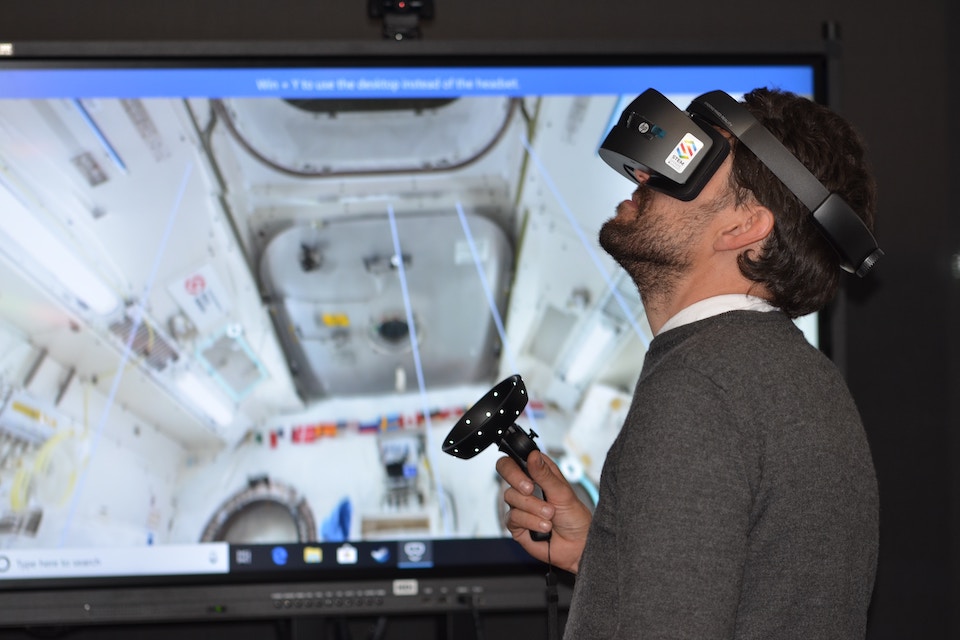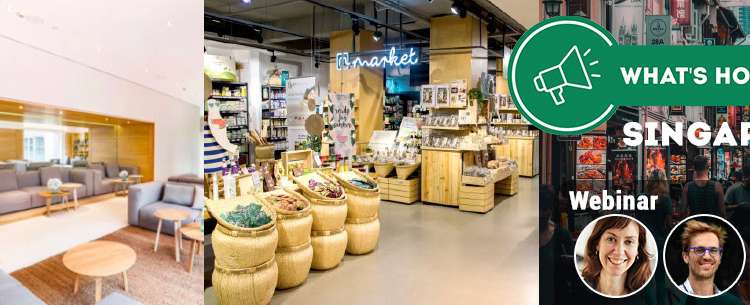Silicon Valley no longer has the monopoly on tech innovation: new startups in Asia are emerging with new ideas and technologies, diversifying innovative power to various ecosystems worldwide.
Asia in particular is boiling hot and setting new trends. Just think of those two figures from 2016:
- China’s giant messaging app WeChat processed twice as much transactions (money transfers) in one month than Paypal did in a year
- India’s biometric-identity database Aadhaar now counts more than a billion registered users, and is turning into a bankless, cashless payment system for all.
Experiential learning through physical exploration of these different ecosystems – from Kuala Lumpur to Seoul and Shenzhen to Bangalore – is still the best way to keep up with the ever evolving trends. Key benefits of such tours involve understanding new behaviors, testing out the latest prototypes and engaging key stakeholders in high-level partnerships.
In a nutshell, learning expeditions are steps into the near future, and wake-up calls for Excoms, GMs and leadership teams who experience real change and a cultural shock by meeting with relevant entrepreneurs, investors, experts and peers.
After completing more than a dozen of these tours, here are 8 important tips for you to plan an effective learning expedition in any part of the world.
1) Select the leading market in your area of interest
For their own historical, geographical, political or economic reasons, some cities might have gained expertise in their particular areas.
For example, Shenzhen, a former fishing city, has became in 20 years the indisputable capital of electronics and the Internet of Things (IoT), in a rapid evolution from many years of being the world’s factory.
South Korea is dubbed the “mobile convergence capital of the world” and has an edge when it comes to rich content (thanks to the fastest internet in the world, soon in 5G), or e-sports.
Singapore has became an innovation hub for Fintech, with most banks and payment companies opening their innovation labs (VISA, DBS, OCBC), and a strong support from the Monetary Authority of Singapore who created a regulatory sandbox to test prototypes in a faster way.
Learning tour in Shenzhen, November 2015. Meeting the robot ordered by Intel to Makeblock, a successful startup from Shenzhen.
It is therefore crucial to research on and analyse the strengths of each market to ensure that they match your team’s interests, and learn from the best.
2) Partner with connectors to identify and reach out to main players in the ecosystem
Once you have selected a market, the next step is to identify its growing startups and the key experts in the market.
Do your research online – the Internet is a treasure trove of information. You’ll find here a very useful compilation of 116 decks of slides available on SlideShare on 52 startup ecosystems, made by Arnaud Bonzom, an excellent connector for Asia and beyond.
Check out our Markets page to find our in-depth analysis of more than 15 ecosystems, including the top startups and experts for each country or city.
In some markets such as China or Japan, it can be excruciatingly difficult to connect to the right people. Many emails can go unanswered which is common when targeting larger companies.
Connect with co-working spaces founders, accelerators, incubators or key startup event organizers in the target market. They are usually well-connected with the startups community and very helpful. They will help you identify the most interesting people to meet or places to visit and can do the introduction for you.
The ideal situation would be to have a solid network of correspondents who can help you out with their connection and time on the ground. Look out for journalists, consultants, and other connectors!
3) Combine the tour with one of the top local events
This is the best way to optimize your time and energy when exploring a market. You have all the stakeholders of the innovation ecosystem gathering in one location. Pick your dates for your expedition to attend one of the top tech or industry-related events. They usually host an exhibition for the early stage startups to present their products or services as well as conferences with speakers from the most popular startups or other experts to get insights on the latest trends.
But not all events are equal. There usually are one or two key annual events in each market. For example in Asia, China has the GMIC in Beijing, the upcoming TechSauce Summit in Thailand, Nasscom Product Conclave in Bangalore, Tech In Asia in Indonesia and Echelon in Singapore. We keep a database of key events in the region, so ping us if you need advice on where & when to go.
Events also attract other sub-events such as meetups or after parties which certainly enhance the experience of the city you are visiting. More casual, more grassroots – they will accelerate the number of encounters you could do.
4) Don’t Neglect Logistics
Logistics preparedness is exceptionally important if you are organizing your tour in a huge Asian metropolis such as Shenzhen, Bangalore or Jakarta. Traffic congestion is a real issue and can ruin your trip if neglected. We usually map all the places of interests to take into account the distances between them and try to group our visits within clusters.
One thing we noticed is that whatever the level of our participants, whenever they embark on a learning tour, they transform into a happy group of quasi-students. So they require lots of attention to details, from catering snacks, water, to knowing where is the nearest toilet. Bear in mind a group is always slow to move, so prepare shuttle timing accordingly and stagger timings if necessary.
If logistics aren’t perfect, whatever you show to your participants will have little impact. Five-star service or nothing.
5) Facilitate communication
Communication can be difficult when you are not talking the language of your host country. For instance, the majority of Chinese and Korean individuals are not perfectly fluent in English, thus having a translator is crucial when visiting these countries. In countries such as Singapore or India, on the other hand, English is a commonly understood language. Language barriers would not be too much of an issue in these countries.
To ease communication within your group, be sure to create WhatsApp group or use an organizational mobile app such as Planify to share the itinerary and meeting points with the participants to your learning tour.
Detailed program of the Tel Aviv Learning Tour 2015 on Planify app
If you are going to China, be wary of the Great Firewall – make sure you download a virtual private network (VPN) such as VyprVPN or Astrill before leaving if you want to access your usual apps such as Google or Facebook. Free VPNs will have limits on either bandwidth or total dataflow per day so the better alternative would be to subscribe to higher volume VPNs for about $10 a month.
You could also decide to buy a set of SIM cards for your participants as they will likely be keen to access their data. If most C-level have global plans, some younger participants may find it hard to roam, and a $20 local sim will make their life way easier.
6) Don’t forget to do your paperwork
You might need a visa to enter some countries, so make sure your participants are respecting all the requirements and have their documents in order. For business visas, you might have to provide invitation letters for some countries such as China or India.
Overall, you need a copy of your participants’ passport, a letter from their company allowing them on the tour, flight and hotel confirmation at all times with you. You don’t want to have to justify any of these in front of your group and/or in a rush.
Don’t forget to print out any material that can bring some information or me-time to your participants. It will keep them busy for bus transfers, and it’s hard to gauge the level of knowledge of different participants on a given topic.
7) Make sure your group knows about the culture of your target country
It is important to understand the culture of the country you are visiting to ensure smooth communication between your participants and your hosts. There is sometimes a very thin line between being polite and rude. While people involved in the startup community tend to be more accustomed to international behaviors, it is always better to understand and respect the traditions of your host country.
In Singapore, name cards have to be held with both hands when given and received while in China, unseen social hierarchies factor into interpersonal communication. This should be taken into account before making contact with them in order to maintain mutual respect and foster good relationships.
Try also to keep groups in a manageable size: 8 to 12 is a good size, beyond can be a bit overwhelming for you, for the host, and the number of interactions during a visit. As a facilitator, you are the main guide of a foreign group to a new country, so be sure to hear and understand anecdotes as well as the broader country context.
8) Be flexible and open to opportunities
You might change your plans while on the tour for various reasons. You might meet a startup during an event which invites you for a showcase of their product; your meeting might be canceled at the last minute; the person you meet might be late (that can be frequent in Asia as Asian people have a tendency not to say no directly). Be adaptive and allocate sufficient time in your schedule to buffer any unforeseen circumstances.
At the end of the day, this flexibility in the facilitation depends on how familiar the guide(s) is about the country and the visits. Improvisation has its limitations so work professionally when touring a country to make the learning experience impactful.
Check out our video on 3 easy steps in organizing your very own learning expedition.











